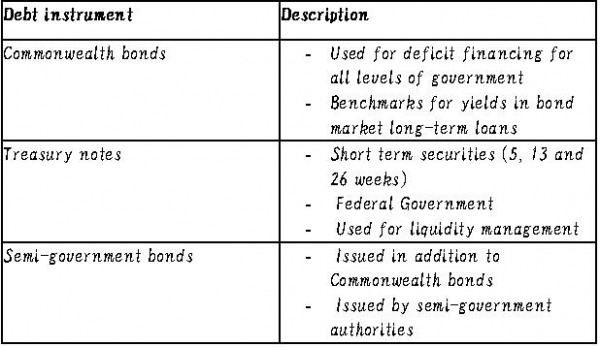Borrowers and Lenders
Borrowers: demand funds.
Individuals:
Individuals borrow money when the necessary income and savings needed to purchase housing or consumer items is not met. These loans can be either long term or short term:
- Long term loans such as buying a house are paid back over a period of time and can be repossessed if payments are not made by the agreed dates.
- Holidays, weddings, entertainment items or educational systems are short term and do not exceed loans of $30 000. They have a higher rate of interest than long term loans.
Businesses:
Business people wishing improve the efficiency of their firm aim to expand their operations or purchase more equipment and machinery. There are different ways businesses borrow money. They are summarised below:
Governments:
Governments projects all require the borrowing of funds. For example:
- Infrastructure: e.g. highways
- Deficit budgets (which are used to lift the level of economic activity as its spending will be greater than its revenue)
For governments there are also different ways of borrowing funds. These are summarised in the table below:
Lenders: have a surplus and are therefore suppliers of funds
All of the people wishing to borrow money can also be lenders:
- Individuals
- Business
- Government
Funds can be leant from overseas, also, as international funds.
Borrowers can be lenders by:
Individuals: depositing their funds into interest-bearing deposits are loaning money to financial institutions for a return.
Businesses: deposit funds into financial institutes to gain a return also. This is one way in which businesses lend money to the financial institutions.
Government: has over the last 8 years been lending money back to the public in the form of repaying debt, this is known as retiring debt.
International: Individuals and governments and companies lend funds from overseas. These are repaid in the future, often along with interest payments.



